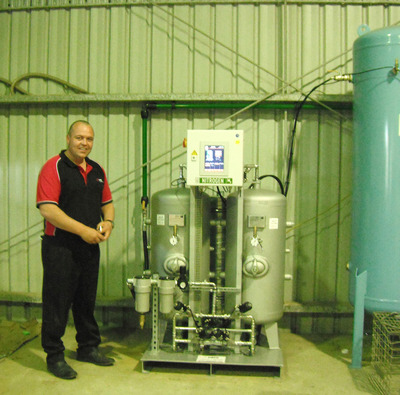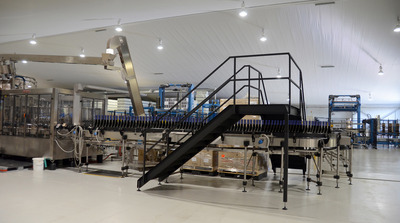On-site nitrogen generation enhances production at winery
Wednesday, 23 October, 2013
In 2006, Robert Oatley established Robert Oatley Vineyards to serve as the family’s winemaking headquarters. The company is blending traditional winemaking values with the precise management of processing technologies, from vine to bottle. This gives the winery the ability to increase production to meet modern demands, save overhead costs and minimise its impact on the environment.
Required for nearly every stage of the bottling process, compressed nitrogen is a vital component of the winery’s operations. Compressed Air and Power Solutions (CAPS) Australia supplies the compressors that power a significant proportion of the equipment used in the winery and bottling facility. However, during a support visit to the winery, Matthew Broadbent, the senior sales engineer in NSW for CAPS, noticed that the winery was using bottled nitrogen for some of the company’s processes.
“I quickly realised that the winery was spending more than necessary on its nitrogen requirements,” Broadbent said, “so I put together a proposal that I was sure could save them money.” The nitrogen-generating equipment proposed was the Inmatec IMT-PN 1650 providing an output of 37 m3/h. The previous bottled nitrogen restricted the winery to 150 m3/day.

After the winery decided to go ahead with the full nitrogen package as specified by CAPS, the resulting cost savings exceeded expectations. Broadbent noted, “The new equipment at Robert Oatley Vineyards has cut the price per cubic metre of nitrogen per day by more than 75%.”
According to Philip Griffin, production manager at the winery, nitrogen can now be used throughout the winery, not just the bottling line. “We have been able to refine our processes to enhance production,” he said.
On the bottling line, nitrogen is used to purge the lines after sterile water has been pumped through them. In order to minimise oxidation, nitrogen is also used while transferring wine to bottles. “To achieve this, the filler bowl has a head of nitrogen and gas is forced into the liquid and the sealing capsule,” Griffin said.
Robert Oatley Vineyards has several pneumatic wine-presses of various load capacities that squeeze the juice from the grapes. The amount of crushing required depends on the type of wine. According to Griffin, compressed air provides a means of accurately controlling the pressure of the press.
“Depending on the wine variety being produced, the grapes will undergo various stages of pressing,” he said. “Accurate control of the presses is crucial to the quality of the finished product. The reliability of the CAPS compressor unit provides us with high levels of product controllability.”
Refrigerated dryers and filtration equipment are included in the compressed air system to ensure the food-grade quality of the compressed air. “If one of the bag presses gets punctured, we can be sure that our product has not been contaminated,” said Griffin.

A vineyard’s success is dependent on the health of the earth. The compressors and nitrogen generators use environmentally friendly compressor lubricant and noise pollution is kept to a minimum. “The compressors are installed in areas where a number of our staff are permanently located,” said Griffin. “The compressors supplied by CAPS are relatively quiet, which protects our workers and maintains a tranquil atmosphere.”
CAPS’ relationship with the winemaker is ongoing. A regular service schedule is carried out by the compressor company’s qualified technicians to ensure the reliable and long-lasting operation of all the compressed gas systems.
Griffin concluded that with the upgraded compressed air system and nitrogen generators operating effectively, the winery is able to concentrate on producing Robert Oatley’s distinctive range of wines for the world.
Oracle assists major distributor in clean energy transition
Essential Energy, an electricity distributor in Australia, is said to have modernised its...
Unlocking rooftops: a 'game changer' for renewable energy
According to Partners in Performance, a major barrier to renewable energy expansion in Australia...
Can we really 'electrify everything'?
Energy experts have debated the practicality of achieving full electrification on a global or...










